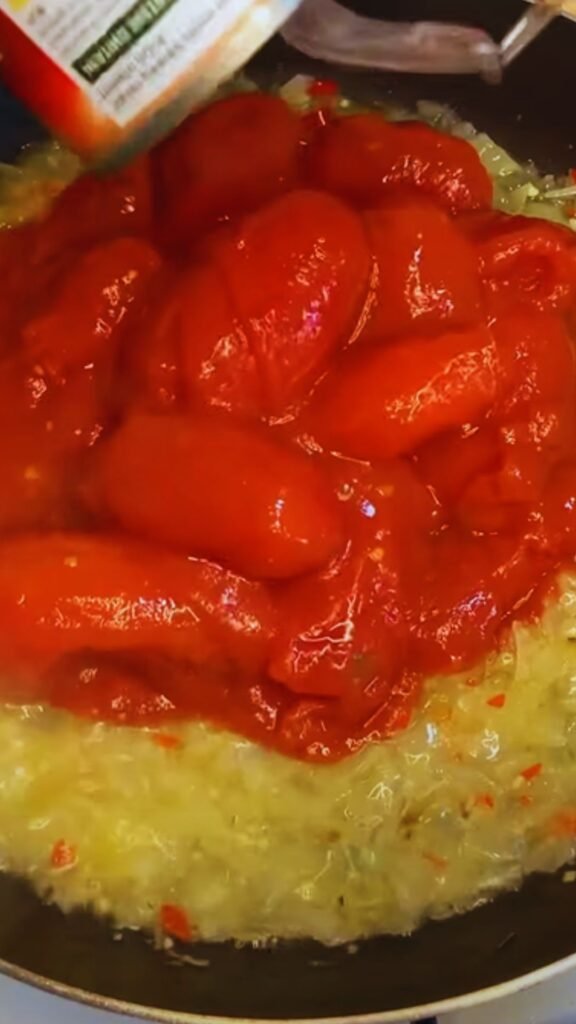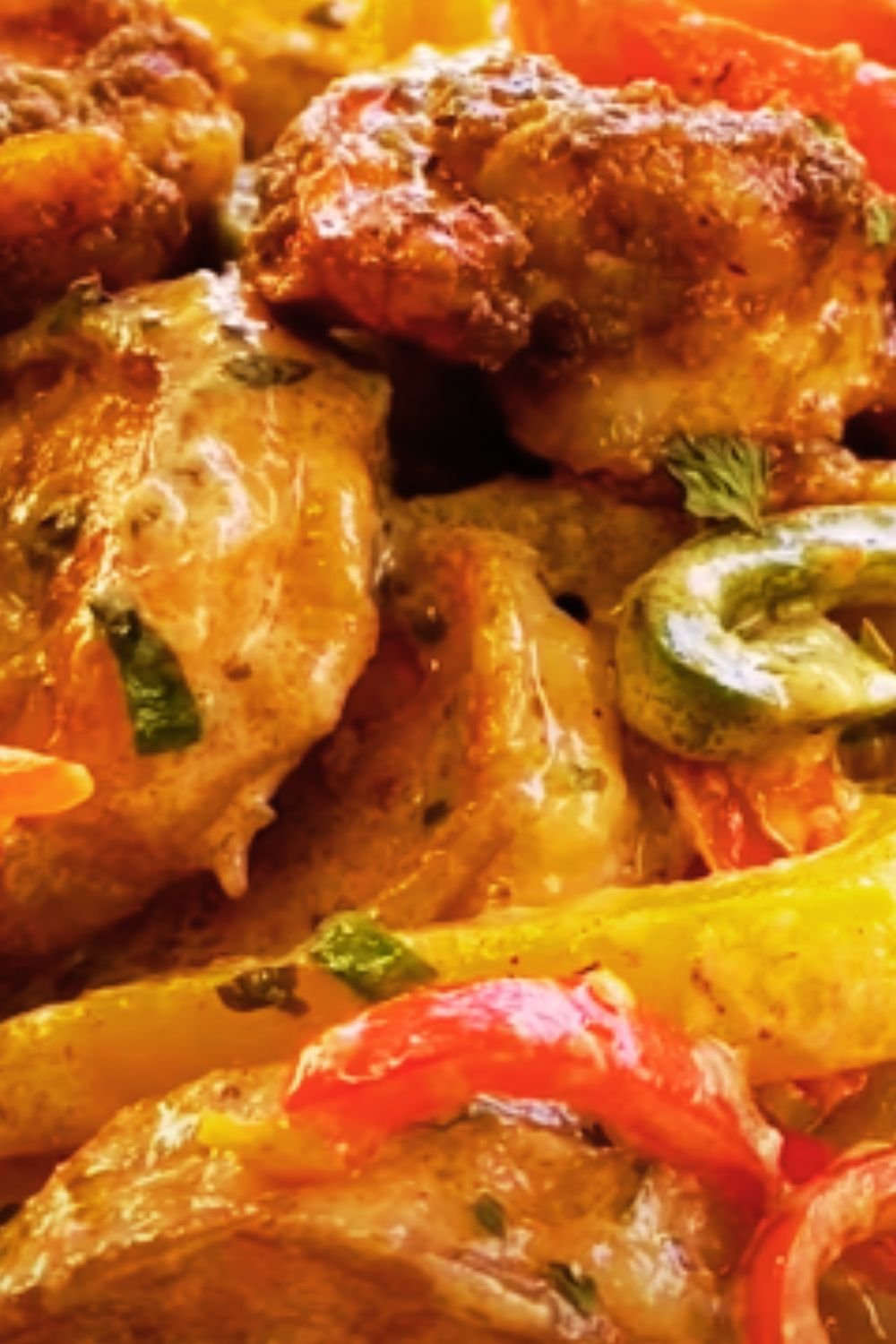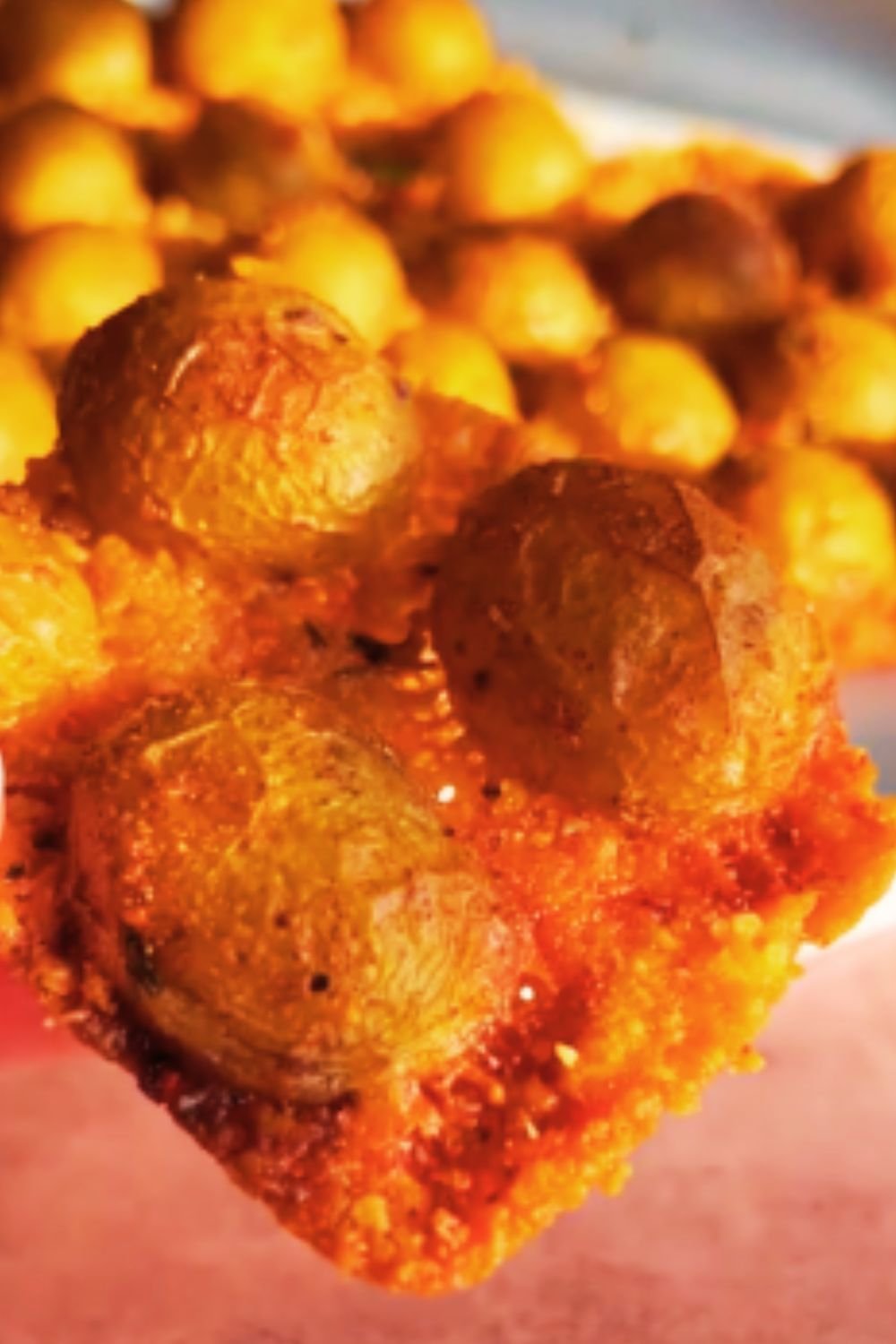There’s something magical about a plate of pasta that transports you straight to the Italian coast without leaving your kitchen. That’s exactly what happens when I make Linguine alla Caprese—a dish that captures the essence of Capri’s famous insalata caprese (tomato, mozzarella, and basil salad) in a warm pasta form. This recipe has become my go-to for those evenings when I want something spectacular without spending hours in the kitchen.
As someone who’s experimented with countless pasta recipes over the years, I’ve found that the simplest ones often deliver the most satisfaction. Linguine alla Caprese is the embodiment of this philosophy—minimal ingredients, minimal cooking time, maximum flavor. The sauce doesn’t even require cooking in the traditional sense; instead, the heat from the pasta gently warms the fresh ingredients, preserving their vibrant flavors and creating a dish that’s light yet incredibly satisfying.
The Magic of Fresh Ingredients
When making Linguine alla Caprese, ingredient quality isn’t just important—it’s everything. This dish relies on the natural flavors of its components rather than lengthy cooking techniques to develop depth. Here’s why each ingredient matters:
Ripe Tomatoes: The foundation of this sauce. I prefer using a mix of cherry or grape tomatoes for sweetness and regular vine-ripened tomatoes for juiciness. When tomatoes are in season during summer months, this dish reaches its pinnacle of flavor. The natural acidity and sweetness of peak-season tomatoes create a sauce that’s bright and complex without any additional ingredients.
Fresh Mozzarella: Not the low-moisture kind you grate on pizza, but soft, milky fresh mozzarella (often labeled “fior di latte” or “buffalo mozzarella”). The difference is remarkable—fresh mozzarella melts slightly from the residual heat of the pasta, creating pockets of creamy goodness throughout the dish.
Basil: Must be fresh, never dried. The aromatic oils in basil leaves deliver that distinctive Italian flavor that makes this dish sing. I grow basil on my windowsill specifically for recipes like this one, as the flavor difference between freshly picked leaves and store-bought is significant.
Quality Olive Oil: Since the sauce isn’t cooked, the flavor of your olive oil will be pronounced. This is the time to use that special bottle you’ve been saving—a fruity, peppery extra virgin olive oil will elevate the entire dish.
Linguine: While you could substitute other long pasta shapes, linguine’s flat, medium width strands provide the perfect surface area to catch the fresh sauce. The sauce clings to linguine better than to spaghetti, creating a more flavorful bite.
The Recipe: Linguine alla Caprese
Ingredients (Serves 4):
- 1 pound (450g) linguine pasta
- 1½ pounds (680g) ripe tomatoes (preferably a mix of varieties)
- 8 ounces (225g) fresh mozzarella cheese
- 1 large bunch fresh basil (about 2 cups loosely packed leaves)
- ¼ cup (60ml) extra virgin olive oil, plus more for drizzling
- 3-4 garlic cloves, minced or thinly sliced
- ½ teaspoon red pepper flakes (optional, for heat)
- 1 tablespoon sea salt (for pasta water)
- Fresh ground black pepper, to taste
- Sea salt flakes, to taste
Equipment Needed:
- Large pot for boiling pasta
- Colander
- Large mixing bowl (glass or ceramic works best)
- Sharp knife
- Cutting board

Preparation Method:
- Prepare the fresh sauce base: At least 30 minutes before cooking the pasta (and up to 2 hours ahead), dice the tomatoes into ½-inch pieces and place them in a large mixing bowl. If using cherry tomatoes, halve or quarter them depending on size. The goal is bite-sized pieces that will release their juices.
- Add flavor elements: To the tomatoes, add the minced or sliced garlic, red pepper flakes (if using), and ¼ cup olive oil. Season with a pinch of sea salt flakes and fresh ground black pepper. Stir gently and let this mixture sit at room temperature. This marination time is crucial—it allows the tomatoes to release their juices and the garlic to infuse the oil.
- Prepare the cheese and herbs: While the tomato mixture rests, tear or cube the fresh mozzarella into small pieces (about ½-inch). Tear most of the basil leaves into small pieces, reserving a few whole leaves for garnish.
- Cook the pasta: Bring a large pot of water to a rolling boil. Add 1 tablespoon of salt (the water should taste like seawater). Add the linguine and cook until al dente according to package directions. Before draining, reserve ½ cup of the starchy pasta water.
- Combine while hot: Drain the pasta well but don’t rinse it. Immediately add the hot pasta to the bowl with the tomato mixture. The heat from the pasta will warm the sauce ingredients and release their aromas. Add the torn mozzarella pieces and most of the torn basil leaves.
- Toss thoroughly: Using two large forks or tongs, toss everything together for at least one full minute. This ensures that the cheese begins to melt slightly and the pasta gets evenly coated with the tomato juices and olive oil. If the pasta seems dry, add a splash of the reserved pasta water—the starch in it helps create a silky sauce.
- Final touches: Drizzle with a bit more extra virgin olive oil, sprinkle with the remaining basil leaves, and add a final pinch of sea salt flakes and fresh pepper if desired.
- Serve immediately: This dish is best enjoyed right away while the contrast between the warm pasta and the fresh ingredients is at its peak.

Variations and Personalized Touches
What I love about this recipe is how adaptable it is while still maintaining its essential character. Here are some of my favorite variations:
Protein Additions:
- Add grilled chicken breast, cut into thin strips
- Mix in cooked shrimp (added at the end to prevent overcooking)
- Include cannellini beans for a vegetarian protein option
Vegetable Enhancements:
- Stir in baby spinach leaves with the hot pasta for an extra nutrient boost
- Add thinly sliced zucchini, marinated with the tomatoes
- Mix in grilled eggplant cubes for a smokier flavor profile
Cheese Alternatives:
- Try with torn burrata instead of mozzarella for an even creamier experience
- Mix in a few tablespoons of fresh ricotta for richness
- Add a sprinkle of freshly grated Parmigiano-Reggiano for a salty umami boost
Herb Variations:
- Include fresh oregano along with the basil
- Try with a bit of fresh mint for a surprising freshness
- Add flat-leaf parsley for an herbaceous note
Nutritional Benefits
One of the reasons I make this dish regularly is that it’s not only delicious but also relatively balanced nutritionally:
| Nutrient | Amount per Serving | % Daily Value | Benefit |
|---|---|---|---|
| Calories | Approximately 450 | 22% | Moderate calorie pasta dish |
| Protein | 16g | 32% | Supports muscle maintenance |
| Carbohydrates | 65g | 21% | Provides energy |
| Fat | 14g | 21% | Primarily healthy monounsaturated fats from olive oil |
| Vitamin C | 28mg | 31% | Antioxidant support from fresh tomatoes |
| Calcium | 215mg | 22% | Bone health from mozzarella |
| Lycopene | 22mg | N/A | Powerful antioxidant from tomatoes |
| Fiber | 4g | 16% | Digestive health |
*Values are approximate and may vary based on specific ingredients used.
Serving Suggestions
While this pasta easily stands on its own as a complete meal, I sometimes like to create a more elaborate dining experience with complementary dishes:
Simple Side Salad:
A light arugula salad dressed with lemon juice and olive oil makes the perfect accompaniment, adding a peppery contrast to the sweet tomatoes in the pasta.
Crusty Bread:
A slice of crusty Italian bread or focaccia is perfect for soaking up any remaining sauce on your plate.
Sparkling Water:
The clean taste of sparkling water with a squeeze of lemon complements this dish beautifully, cleansing the palate between bites without overwhelming the delicate flavors.
Dessert Pairing:
Complete the meal with a simple dessert that echoes the freshness of the main course—perhaps fresh berries with a dollop of mascarpone or a lemon sorbet.

Make-Ahead and Storage Tips
While Linguine alla Caprese is ideally served immediately after preparation, there are some strategies for planning ahead:
For Entertaining:
- Prepare the tomato mixture up to 4 hours ahead and keep at room temperature
- Have all ingredients measured and ready before guests arrive
- Cook the pasta just before serving for the freshest result
Storing Leftovers:
- Refrigerate any leftovers in an airtight container for up to 2 days
- The pasta will absorb more of the juices as it sits, changing the texture somewhat
- Gently warm leftovers in a skillet with a splash of water or olive oil, being careful not to overheat and completely melt the cheese
Not Recommended:
- Freezing this dish (the fresh mozzarella and tomatoes won’t maintain their texture)
- Making the entire dish more than a few hours ahead
Seasonal Adaptations
One of the joys of cooking with fresh ingredients is working with what’s available throughout the year. Here’s how I adapt this dish through the seasons:
Summer Version (Peak Season):
Use a variety of heirloom tomatoes at the height of ripeness, increase the fresh basil, and serve slightly chilled for a refreshing summer meal.
Spring Version:
Include spring peas and tender asparagus tips, using the earliest available greenhouse tomatoes or high-quality cherry tomatoes.
Fall Version:
Add roasted cherry tomatoes to intensify flavor when fresh tomatoes begin to lose quality, and incorporate toasted pine nuts for warmth.
Winter Version:
Use the best quality cherry tomatoes available (often the sweetest option in winter), increase the garlic slightly, and finish with a drizzle of high-quality balsamic glaze for depth.
Why This Recipe Works: The Science Behind the Simplicity
There’s actually fascinating food science behind why this simple combination works so beautifully:
- Acid-Base Interaction: The acidity of tomatoes balances perfectly with the alkaline, creamy nature of fresh mozzarella.
- Flavor Compounds: The volatile compounds in basil (primarily linalool and eugenol) are fat-soluble, meaning they release their flavor most effectively when combined with olive oil.
- Starch Magic: The starch on the surface of the freshly cooked pasta helps emulsify the olive oil with the tomato juices, creating a light, silky coating rather than a watery pool at the bottom of your bowl.
- Temperature Gradient: The hot pasta partially melts the mozzarella while warming the tomatoes just enough to release their flavor without cooking them, maintaining the fresh brightness of the dish.
Common Questions and Answers
Q: Can I use dried pasta instead of fresh for this recipe? Absolutely! In fact, I typically use dried linguine for this recipe. Dried pasta gives a pleasant al dente texture that works beautifully. Just be sure to cook it according to package directions until it’s tender but still has a slight bite.
Q: My tomatoes don’t have much flavor. How can I improve the taste? If you’re making this dish outside of tomato season, there are a few tricks to enhance flavor. First, let the tomato mixture marinate longer (up to 4 hours) with a pinch of sugar to draw out sweetness. Second, consider using a mix of fresh and good-quality canned San Marzano tomatoes, which often have better flavor year-round. Finally, a tiny splash of balsamic vinegar can add depth.
Q: Can I make this gluten-free? Yes! Simply substitute your favorite gluten-free linguine or spaghetti. The sauce itself contains no gluten. Just make sure to cook the gluten-free pasta carefully according to package directions as it can have different cooking times than traditional pasta.
Q: How can I make this dish more filling without losing its fresh character? My favorite way to add substance is to include cannellini beans or chickpeas that have been rinsed and drained. They add protein and fiber without requiring additional cooking. Another option is to serve slightly smaller portions as a first course, followed by a protein-based second course such as grilled fish or chicken.
Q: The mozzarella clumped together when I added it to the pasta. How can I prevent this? This happens when the cheese is too cold or the pasta is too hot. Let the mozzarella sit at room temperature for about 30 minutes before using, and allow the pasta to cool for just a minute after draining before adding it to the tomato mixture.
Q: Can I use regular mozzarella if I can’t find fresh? While you can use regular low-moisture mozzarella in a pinch, the dish will be quite different—less creamy and more chewy. If fresh mozzarella isn’t available, consider substituting another soft cheese like ricotta or even goat cheese for a different but still delicious variation.
Q: How do I know if my olive oil is good quality? Good extra virgin olive oil should have a fruity, sometimes peppery flavor and may even make you cough slightly when tasted straight. Look for oils in dark bottles with a harvest date (not just an expiration date), and try to buy from sources with high turnover to ensure freshness.
Final Thoughts: The Beauty of Simplicity
After years of cooking increasingly complex dishes, I’ve come full circle to appreciate recipes like Linguine alla Caprese that rely on quality ingredients rather than complicated techniques. There’s something profoundly satisfying about creating a memorable meal with just a handful of ingredients, each one singing clearly in the final dish.
This recipe reminds me of why Italian cuisine has such enduring appeal worldwide—it’s cooking that honors ingredients rather than masks them, that creates harmony through balance rather than overwhelming with excess. When I serve this pasta to friends and family, the clean plates and requests for seconds tell me everything I need to know.
I hope this recipe becomes a staple in your kitchen as it has in mine—a reminder that with the right ingredients and a little care, extraordinary meals don’t require extraordinary effort.


